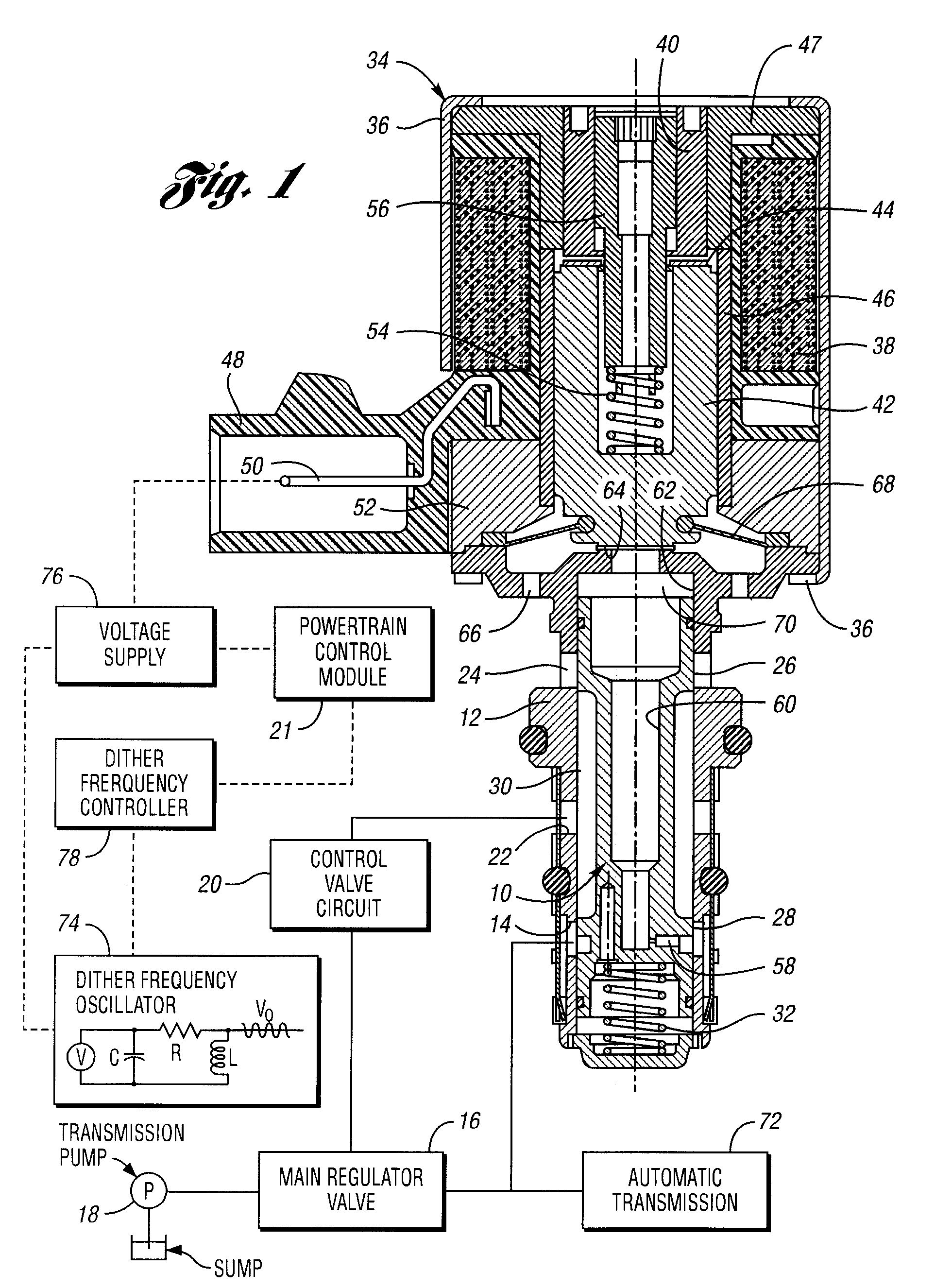A control method and controller for a solenoid-operated electrohydraulic control valve
a control valve and solenoid technology, applied in the direction of valve details, valve arrangement, thin material handling, etc., can solve the problems of resonance problems, too high to produce sufficient movement to eliminate or reduce valve sticking, and the electric dither frequency in the valve system using the solenoid-actuated pressure control valve may not always be sufficiently different relative to the solenoid's natural frequency to prevent resonance, etc., to achieve greater repeatability and stability, reduce or avoid undesirable transmission pressure control variations, and reduce hy
- Summary
- Abstract
- Description
- Claims
- Application Information
AI Technical Summary
Benefits of technology
Problems solved by technology
Method used
Image
Examples
Embodiment Construction
[0026]FIG. 1 shows a valve spool 10 positioned in a valve body 12. A fluid pressure inlet port 14 in valve body 12 communicates with a main pressure regulator valve 16 of an automatic transmission control system. The main regulator valve is supplied with fluid pressure by a transmission pump 18 driven by an engine in a vehicle driveline. The regulator valve 16 communicates with a transmission control valve circuit 20 and with a valve pressure ports 22 and 14 in valve body 12.
[0027] The automatic transmission 72 includes transmission ratio shift valves that respond to regulated line pressure. Controls of this type are well known in the art.
[0028] An exhaust port 24 registers with a valve land 26 on the valve spool 10. A companion valve land 28 registers with inlet port 14. Annular space 30 surrounding the valve spool 10 is in communication with the control pressure port 22, and lands 26 and 28 control the degree of communication between port 22 and each of the ports 14 and 24. Spri...
PUM
 Login to View More
Login to View More Abstract
Description
Claims
Application Information
 Login to View More
Login to View More - R&D
- Intellectual Property
- Life Sciences
- Materials
- Tech Scout
- Unparalleled Data Quality
- Higher Quality Content
- 60% Fewer Hallucinations
Browse by: Latest US Patents, China's latest patents, Technical Efficacy Thesaurus, Application Domain, Technology Topic, Popular Technical Reports.
© 2025 PatSnap. All rights reserved.Legal|Privacy policy|Modern Slavery Act Transparency Statement|Sitemap|About US| Contact US: help@patsnap.com



